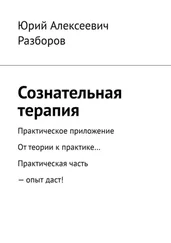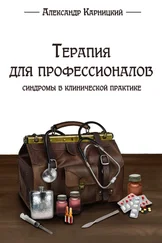Schain J. (1989). The new infant research: Some implications for group therapy. Group, 13 (2), 112–122.
Scheuerer-Englisch H. (1989). Das Bild der Vertrauensbeziehung bei 10 jährigen Kindern und ihren Eltern. Unveröffentl. Diss., Regensburg.
Schieche M. & Spangler G. (1994). Biobehavioral organization in one-year-olds: Quality of mother–infant attachment and immunological and adrenocortical regulation. Pychologische Beiträge, 36, 30–35.
Schmidt S. & Strauß В. (1996). Die Bindungstheorie und ihre Relevanz für die Psychotherapie. Psychotherapeut, 41, 139–150.
Schmücker G., Buchheim A., Köhntop В., Betzier S., Pohlandt F., Pokorny D., Kächele H. & Brisch K. H. (2000). Mother–child interaction of very low birthweight premature infants: Investigating the influence of neurobiological risk factors and a psychotherapeutic intervention. 7 thCongress World Association for Infant Mental Health, Montreal/Canada, 28 July.
Schmücker G., Brisch K. H., Köhntop В., Betzier S., Osterle М., Kächele Н., Pohlandt F., Pokorny D., Laucht M. & Buchheim A. (2005). The influence of prematurity, matemal anxiety, and infants’ neurobiological risk on mother-infant interactions. Infant Mental Health Journal, 26 (5), 423–441.
Schore A. N. (1996). The experience-dependent maturation of regulatory system in the orbital prefrontal cortex and the origin of developmental psychopathology. Development and Psychopathology, 8, 59–87.
Schore A. N. (1997). Early development of the nonliniar right brain and development of a predisposition to psychiatric disorders. Development and Psychopatholgy, 9, 595–631.
Schore A. N. (2001a). The effects of early relational trauma on right brain development, affect regulation, and infant mental health. Infant Mental Health Journal, 22, 201–269.
Schore A. N. (2001b). Effects of secure attachment relationship on right brain development, affect regulation, and infant mental health. Infant Mental Health Journal, 22, 7–66.
Schore A. N. (2007). Affektregulation und die Reorganisation des Selbst. Stuttgart: Klett-Cotta.
Schore J. R. & Schore A. (2008). Modem attachment theory: The central role of affect regulation in development and treatment. Clinical Social Work Journal, 36, 9–20.
Schramm E. (1996). Interpersonelle Psychotherapie. Stuttgart–NY: Schattauer.
Schuengel C., Bakermans-Kranemburg M. J. & van IJzendoorn M. H. (1999a). Frightening maternal behavior linking unresolved loss and disorganized infant attachment, Journal of Consulting and Clinical Psychology, 67, 54–63.
Schuengel C., Bakermans-Kranemburg M.J., van IJzendoorn M.H. & Blom M. (1999b). Unresolved loss and infant disorganization: Links to frightening maternal behavior. In: J. Solomon & C. George (Hrsg.). Attachment disorganization. NY– London: Guilford Press, 71–94.
Schur M. (1960). Discussion of Dr. John Bowlby’s paper. Psychoanalytic Study of the Child, 15, 63–84.
Segal H. (1983). Melanie Klein. Eine Einführung in ihr Werk. Frankfurt/M.: S. Fischer.
Silverman R. C. & Lieberman A. F. (1999). Negative maternal attributions, projective identification, and the intergenerational transmission of violent relational patterns. Psychoanalytic Dialogues, 9, 161–186.
Slade A. (2007). Disorganized mother, disorganized child: The mentalization of affective dysregulation and therapeutic change. In: D. Oppenheim & D. F. Goldsmith (Hrsg.). Attachment theory in clinical work with children. NY: Guilford Press, 226–250.
Solomon J. & George C. (Hrsg.) (1999a). Attachment disorganization. NY–London: Guilford Press.
Solomon J. & George C. (1999b). The caregiving system in mothers of infants: A comparison of divorcing and married mothers. Attachment & Human Development, 1, 171–190.
Solomon J. & George C. (1999c). Toward an integrated theory of maternal caregiving. In: J. Osofsky & H. E. Fitzgerald (Hrsg.). WAIMH. Handbook of infant mental health. Ed. 3. NY: Wiley, 323–368.
Spangler G. (1998). Attachment representation and emotional regulation: A psychobiological perspective. Development, Structure, and Functioning of Internal Working Models. Symposium Universität Regensburg, 6–7 July 1998.
Spangler G. & Grossmann K. E. (1993). Biobehavioral organization in securely and insecurely attached infants. Child Development, 64, 1439–1450.
Spangler G. & Schieche M. (1995). Psychobiologie der Bindung. In: G. Spangler & P. Zimmermann (Hrsg.). Die Bindungstheorie. Grundlagen, Forschung und Anwendung. Stuttgart: Klett-Cotta, 297-31o.
Spangler G. & Zimmermann P. (Hrsg.) (1995). Die Bindungstheorie. Grundlagen, Forschung und Anwendung. Stuttgart: Klett-Cotta.
Spangler G., Johann M., Ronai Z. & Zimmermann P. (eingereicht). Genetic and environmental influence on attachment disorganization.
Spieker J. & Booth C. L. (1988). Maternal antecedents of attachment quality. In:
J. Belsky & T. Nezworski (Hrsg.). Clinical implications of attachment. Hillsdale,
NJ: Erlbaum, 95–135.
Spitz R.A. (1957). Die Entstehung der ersten Objektbeziehungen. Stuttgart: Klett-Cotta.
Spitz R. A. (1960). Discussion of Dr. John Bowlby’s paper. Psychoanalytic Study of the Child, 15, 113–117.
Spitz R. A. (1967). Vom Säugling zum Kleinkind. Naturgeschichte der Mutter-Kind – Beziehungen im ersten Lebensjahr. Stuttgart: Klett-Cotta.
Spitzer M. (2000). Das hast Du von der Mutter – aber nicht geerbt. Nichtgenetische Weitergabe von Charaktereigenschaften über mehrere Generationen im Tier – experiment. Nervenheilkunde, 19, 48–87.
Sroufe L. А. (1979). The coherence of individual development: Early care, attachment and subsequent developmental issues. American Psychologist, 34, 84–841.
Sroufe L. A. (1985). Attachment classification from the perspective of infant-caregiver relationships and infant temperament. Child Development, 56, 1–14.
Sroufe L.A. & Fleeson J. (1988). The coherence of family relationships. In: R.A. Hinde & J. Stevenson-Hinde (Hrsg.). Relationships within families. Mutual Influences. Oxford: Clarendon Press, 27–47.
Sroufe L. A. & Rutter M. (1984). The domain of developmental psychopathology. Child Development, 55, 17–29. Steele H. & Steele M. (1994). Intergenerational patterns of attachment. Advances in Personal Relationships, 5, 93–120.
Steele M., Hodges J., Kaniuk J., Henderson K., Hillman S. & Bennett P. (2002). Weitererzählungen von Geschichten als Methode zur Erfassung der inneren Welt des Kindes – Implikationen fur die Adoption. In: K. H. Brisch K. E. Grossmann,
K. Grossmann & L. Köhler (Hrsg.). Bindung und seelische Entwicklungswege – Grundlagen, Prävention und klinische Praxis. Stuttgart: Klett-Cotta, 339–352.
Stern D. (1989). The representation of relational patterns: Developmental consideration. In: A. J. Sameroff & R. N. Emde (Hrsg.). Relationship disturbances in early childhood: A developmental approach. NY: Basic Books, 52–69.
Stern D. (1992). Die Lebenserfahrung des Säuglings. Stuttgart: Klett-Cotta.
Stevenson-Hinde J. (1990). Attachment within family systems: An overview. Infant Mental Health Journal, 218–227. Stierlin H. (1980). Von der Psychoanalyse zur Familientherapie. Stuttgart: Klett-Cotta. Strauß В. (2008). Bindung und Psychopathologie. Stuttgart: Klett-Cotta. Strauß B. & Schmidt S. (1997). Die Bindungstheorie und ihre Relevanz für die Psy
chotherapie. Psychotherapeut, 42, 1–16. Stuhr, U. (1993). Die Deutungsarbeit im psychoanalytischen Dialog. Göttingen: Vandenhoeck & Ruprecht.
Suess G. J., Grossmann K. E. & Sroufe L. A. (1992). Effects of infant attachment to mother and father on quality of adaption in preschool: From dyadic to individual organization of self International Journal of Behavioral Development, 15, 43–65.
Target M., Fonagy P. & Shmueli-Goetz Y. (2003). Attachment representations in school-age children: The development of the child attachment interview (CAI). Journal of Child Psychopathology, 29, 171–186.
Читать дальше
Конец ознакомительного отрывка
Купить книгу






